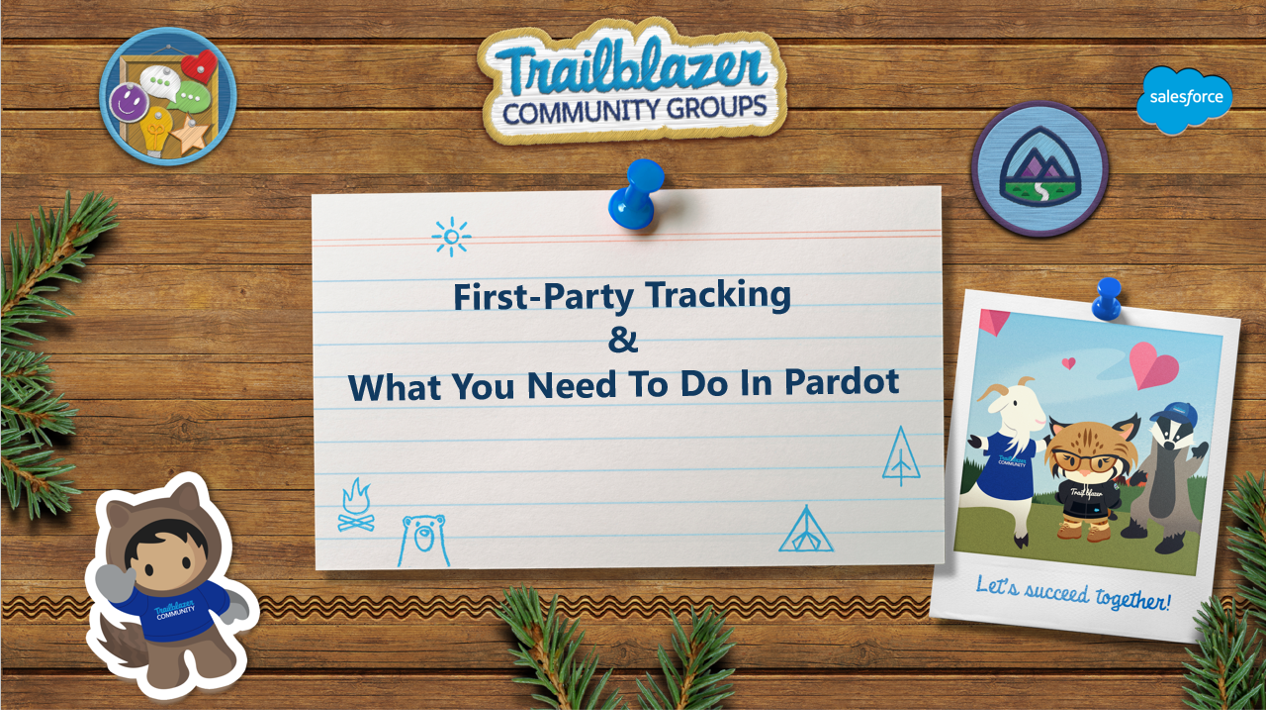First-Party Tracking and What You Need To Do In Account Engagement
On March 10, 2021, the Twin Cities and New Delhi Account Engagement User Groups presented a session on first-party tracking. The links below are the slides and the recording of the session. Salesforce’s Christopher Cornett and Joel Odom were guest speakers.
Slides
2021.03.10 First-Party Tracking User Group Meeting
Recording
2:33 – Slide 4 – What is a cookie?
3:17 – Slide 5 – What is the difference between a first-party and third-party cookie?
7:02 – Slide 9 – Privacy concerns with third-party cookies
9:53 – Slide 10 – Google Chrome announces a plan to phase out third-party cookies by the end of 2021; Account Engagement uses third-party cookies
13:35 – Slide 14 – How will you know if you have a problem with website tracking?
14:53 – Slide 15 – What happens if you don’t upgrade to first-party tracking?
16:37 – Slide 18 – What you need to do in Account Engagement to change to first-party tracking? (Chris Cornett)
22:58 – Slide 27 – How can you test first-party tracking?
25:31 – Slide 28 – Understand how first-party tracking works
28:07 – Slide 31 – Review of different scenarios
31:22 – Slide 35 – Summary
Questions
33:09 – What is a subdomain?
36:39 – When can you turn off the “Use third-party tracking” Account Engagement setting?
39:42 – If a company uses a different email sending domain, what tracker domain needs to be added on the email asset? (Scenario #4)
40:47 – How do European domains work in a first-party context? (www.website.co.uk)
44:09 – Chris, can you review how the first-party tracking works again? (slide 29)
46:40 – Why is selecting the correct tracker domain is important on Account Engagement email assets?
50:54 – Performance by @elevenex11
Resources
What’s the Difference Between First-Party and Third-Party Cookies (90-second video)
Confused by First-Party Tracking? No More!
Account Engagement’s First-Party Tracking Open Beta: Everything You Need to Know
The Demise of Third-Party Cookies: What B2B Marketers Need to Know

